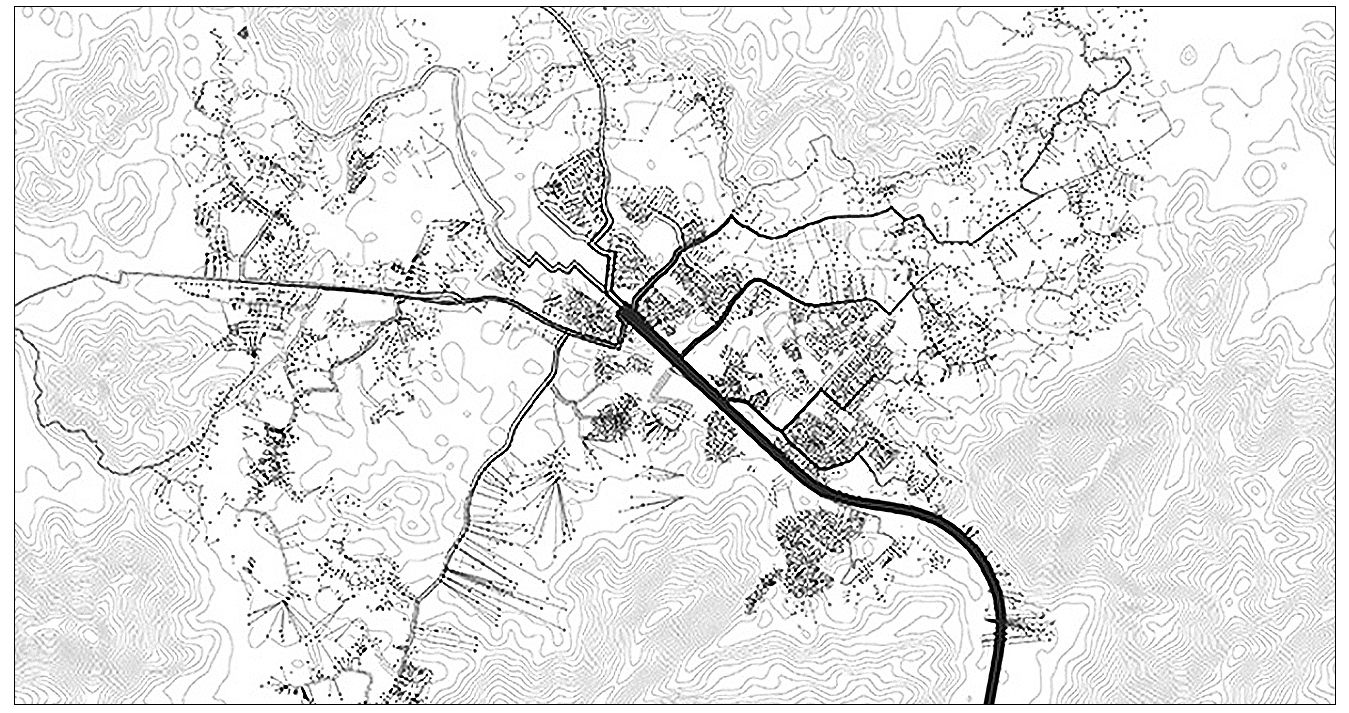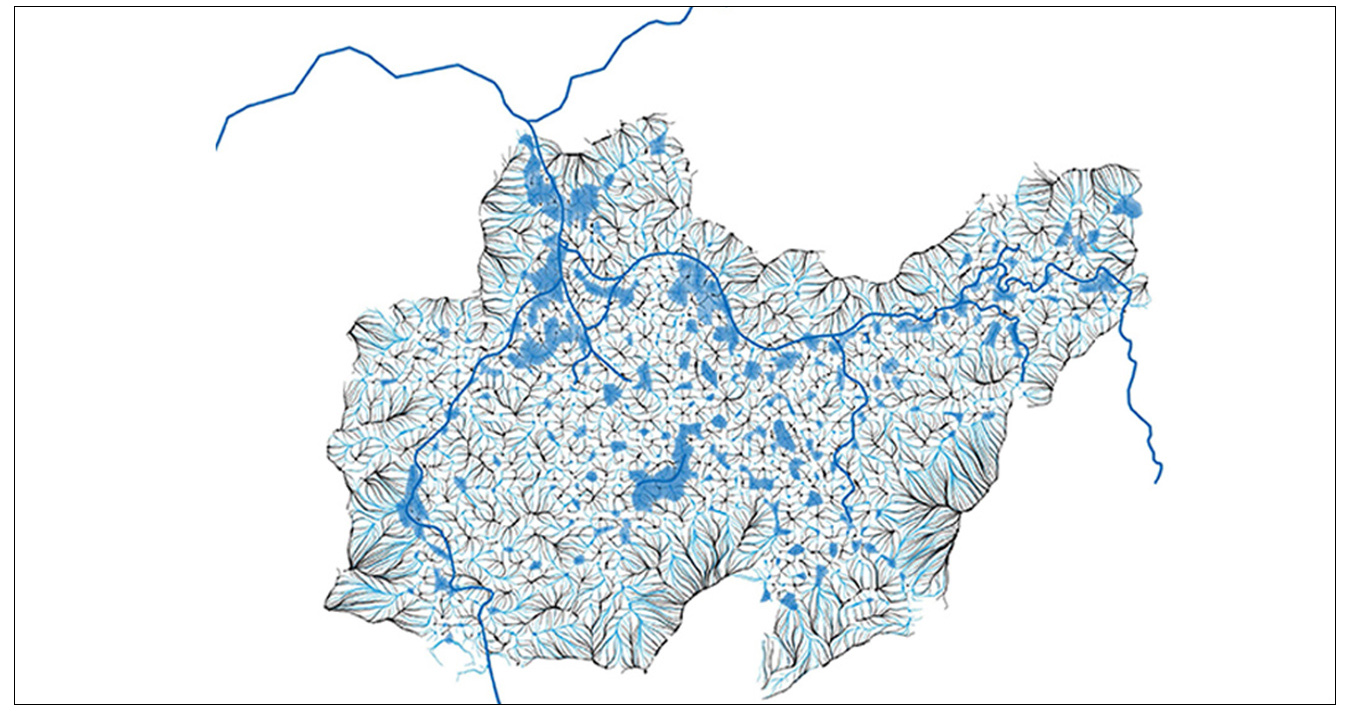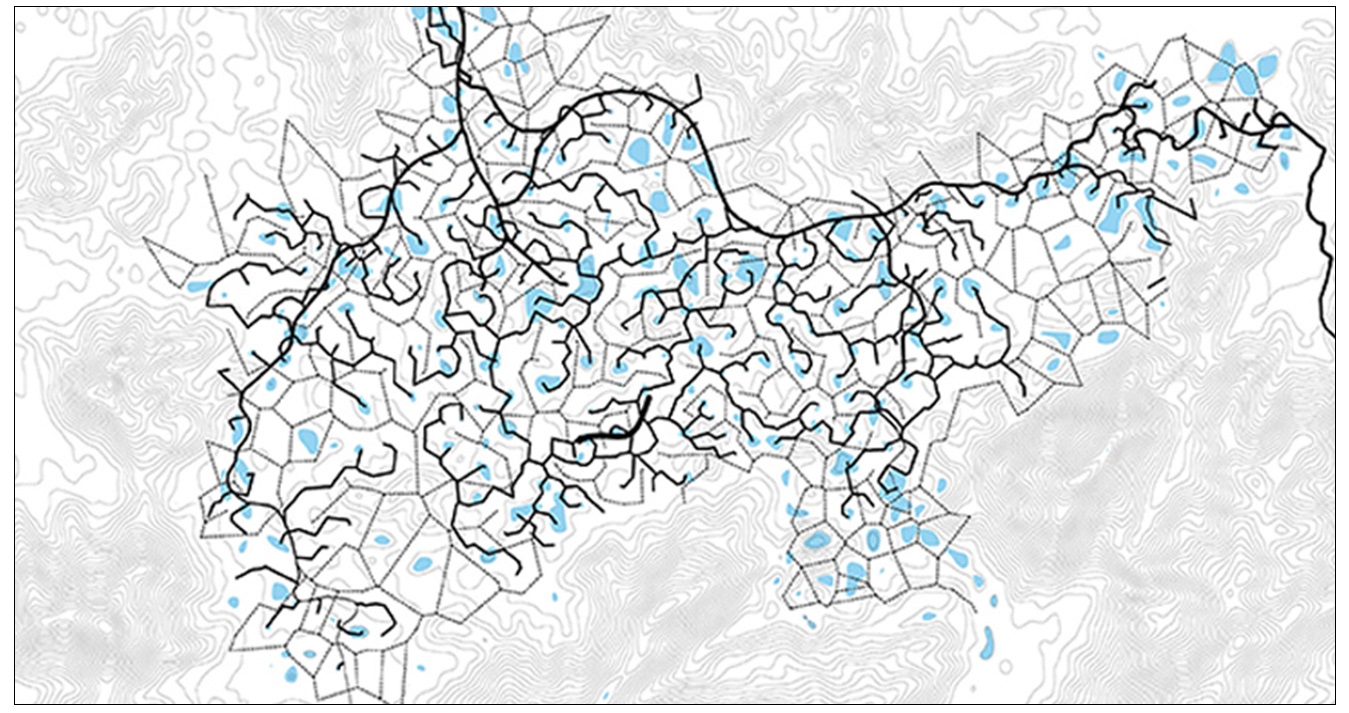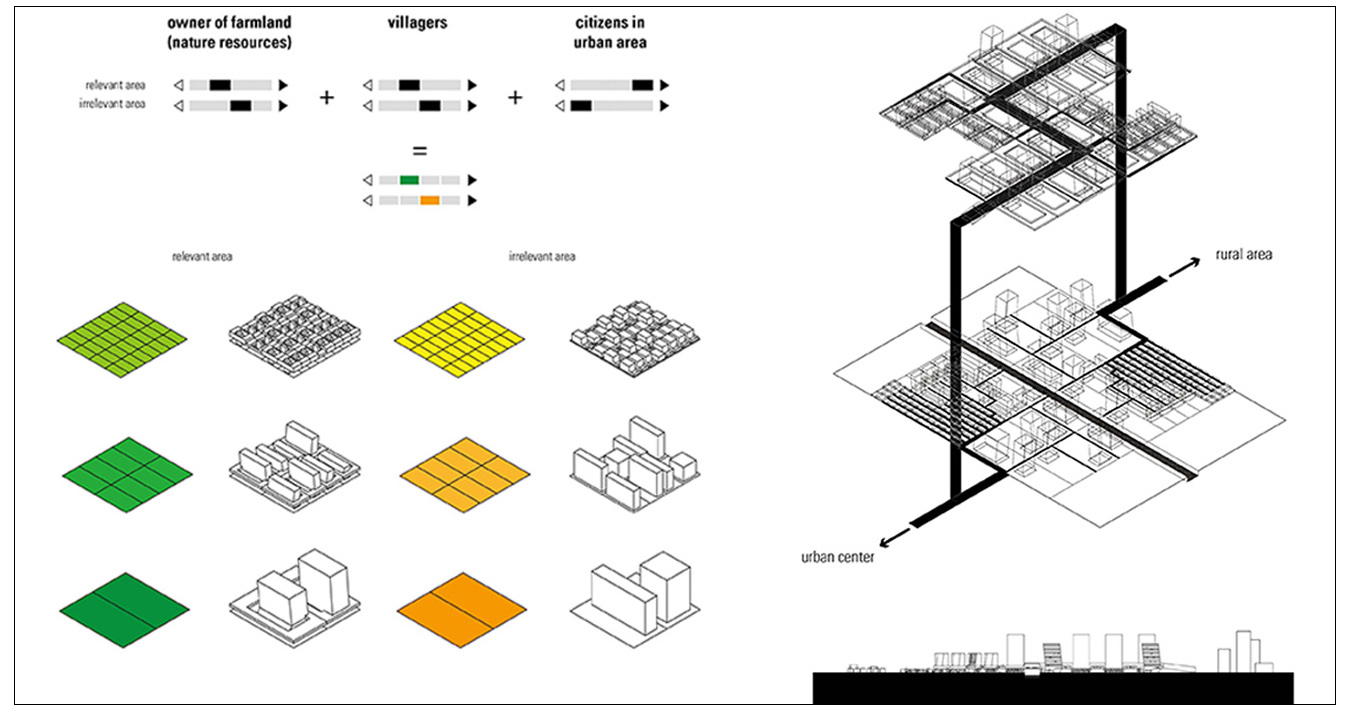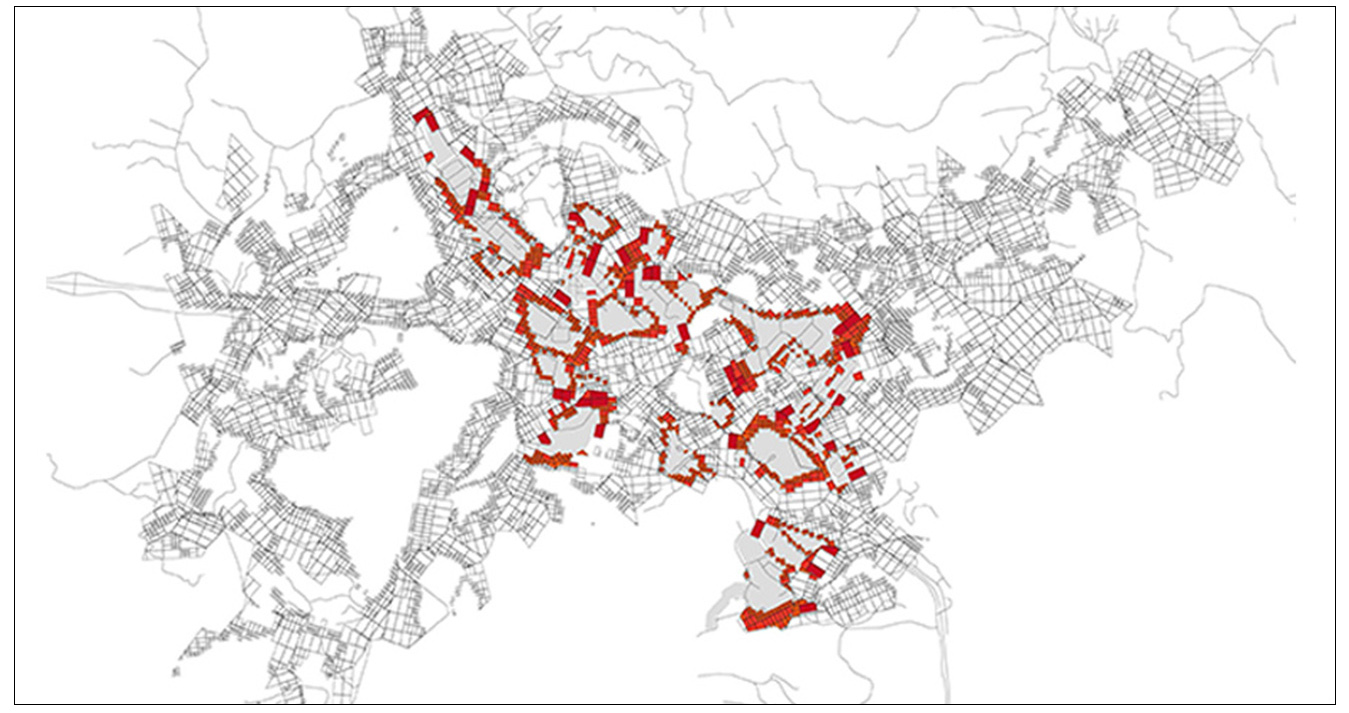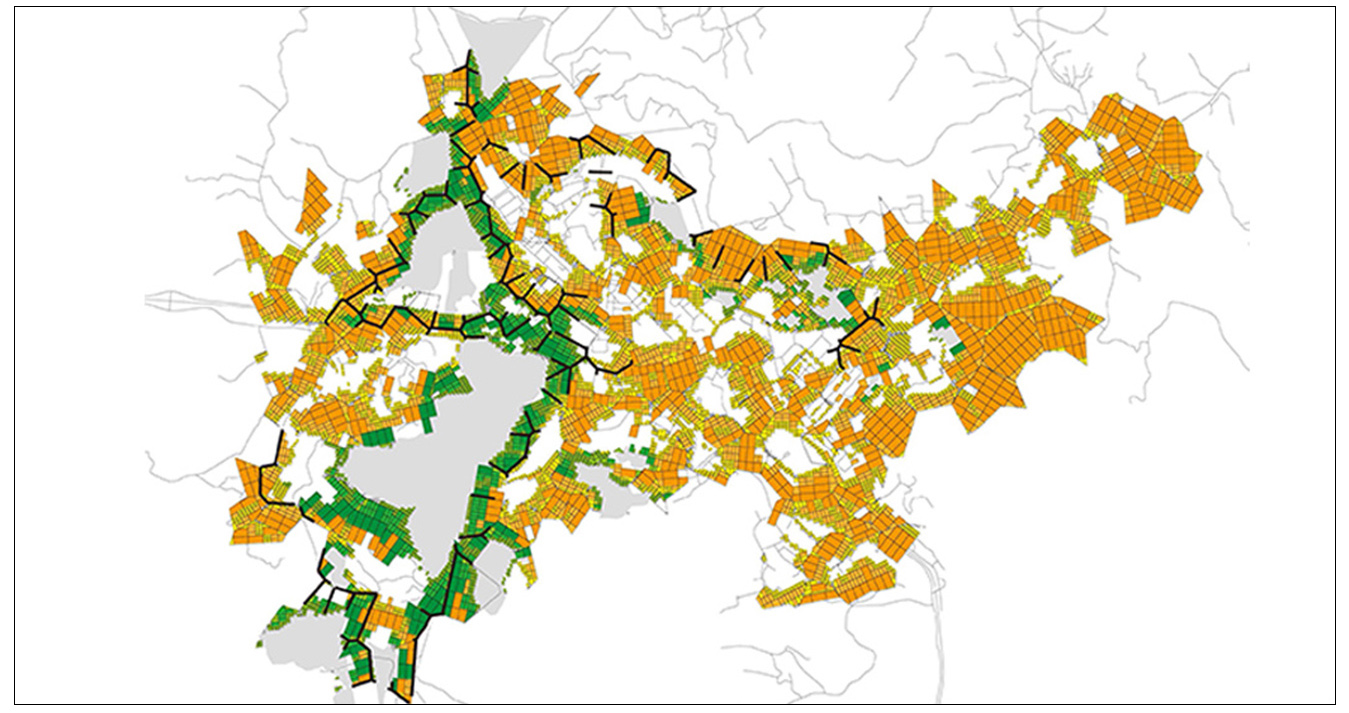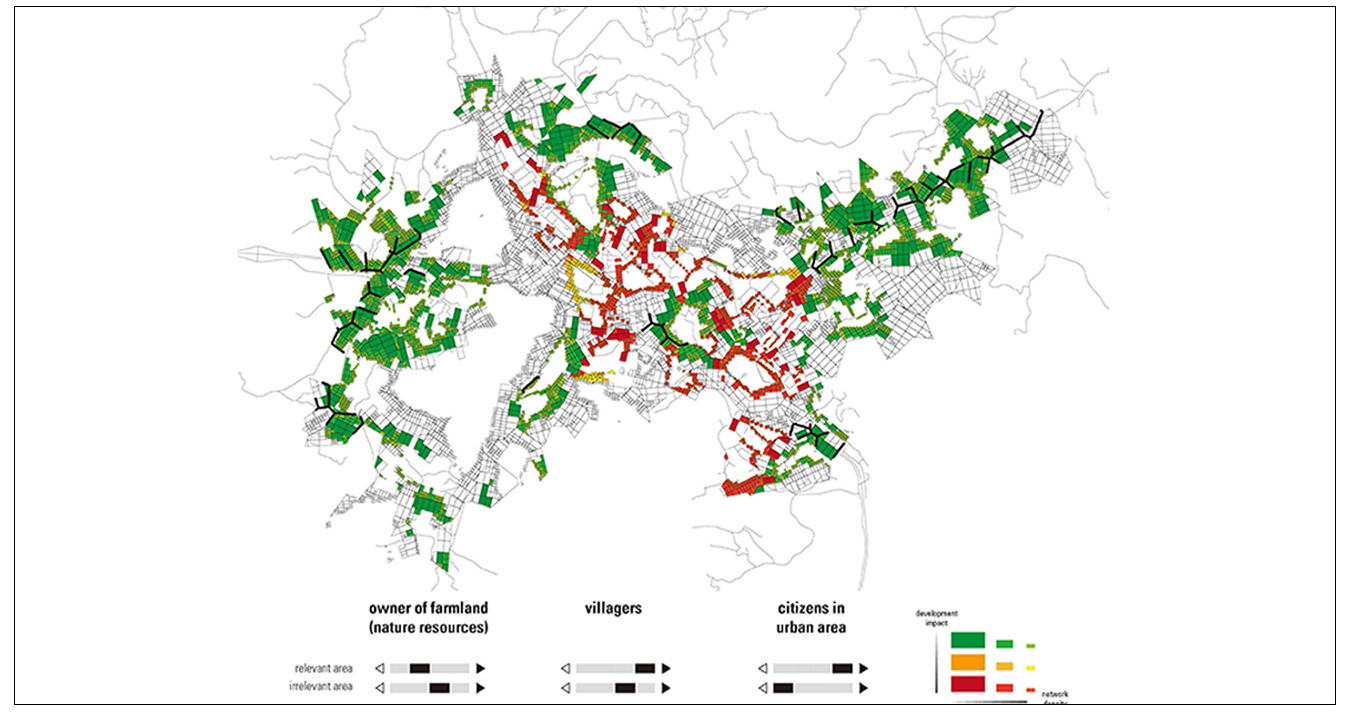Weaver City
The conflict between local preservation and global develop-mentis an urgent matter that needs to be addressed during the integration of Shenzhen and Hong Kong. In Sheung Shui, the first point of intersection of the two cities, smuggling is increasing and gated communities are spreading. As a result, a negotiations device to merge opinion from different political groups is desirable.
Research initially focused on geographical conditions such as flooding, movement of goods and services as well as local bor-der accessibility. I then began to understand that this knowl-edge could be cross fertilized with an understanding of par-ticularmodes of layering urban activities that are inherently characteristic of the Asian megalopolis.
In order to improve border accessibility on a large scale, a new transportation network and water drainage network were gen-eratedby orientation of nature conditions in the city. At the same time, I propose a series variation of building types which inspired by the principle of border transformation of gated communities to keep certain closed tendency.
This urban fabric is then deployed on the projective network though the use of a relational model. The fundamental princi-pleof the model is that the final image or rendered view is the result of relations and driving forces. The bridges and infra-structures knitting the different parts of the fabric become both a specific and a generic proposal of urban fabric, since the model demonstrates that there is no one single outcome, but a “family” of possible configurations.
As a conclusion, there is a utopian attitude in my work. I want to present the spatial outcome of the fabric as a crucial moment of negotiations between different political groups during the process of urban integration between Shenzhen and Hong Kong.
- [year] 2013
- [] Berlage Institute
- [Credits] Jinlefu Su
- [Design Tutors] Enriqueta Llabres Eduardo Rico
Weaver City
The conflict between local preservation and global develop-mentis an urgent matter that needs to be addressed during the integration of Shenzhen and Hong Kong. In Sheung Shui, the first point of intersection of the two cities, smuggling is increasing and gated communities are spreading. As a result, a negotiations device to merge opinion from different political groups is desirable.
Research initially focused on geographical conditions such as flooding, movement of goods and services as well as local bor-der accessibility. I then began to understand that this knowl-edge could be cross fertilized with an understanding of par-ticularmodes of layering urban activities that are inherently characteristic of the Asian megalopolis.
In order to improve border accessibility on a large scale, a new transportation network and water drainage network were gen-eratedby orientation of nature conditions in the city. At the same time, I propose a series variation of building types which inspired by the principle of border transformation of gated communities to keep certain closed tendency.
This urban fabric is then deployed on the projective network though the use of a relational model. The fundamental princi-pleof the model is that the final image or rendered view is the result of relations and driving forces. The bridges and infra-structures knitting the different parts of the fabric become both a specific and a generic proposal of urban fabric, since the model demonstrates that there is no one single outcome, but a “family” of possible configurations.
As a conclusion, there is a utopian attitude in my work. I want to present the spatial outcome of the fabric as a crucial moment of negotiations between different political groups during the process of urban integration between Shenzhen and Hong Kong.



